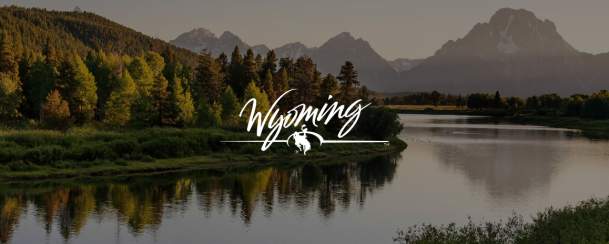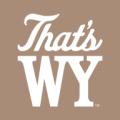With its charming small towns, abundant wildlife and untold acres of rugged wilderness, Wyoming is a wonderland for the bold, the curious and those who live for adventure. Yet even in a place shaped by outlaws and mavericks, we all have a part to play in keeping the Cowboy State wild and free. So whether you’re a nature lover, history buff or avid outdoorsman, learn the ropes of responsible travel before setting out with these helpful travel tips on everything from weather preparedness to wildlife safety and beyond.
Keep Wyoming’s Wildlife Wild
Catching a glimpse of Wyoming wildlife in our wild-open spaces is a truly unforgettable experience. The state is home to over 100 species of mammals and more than 400 species of birds, from black bears to bald eagles, moose to mountain lions, making it one of the best wildlife-watching destinations in the country.
Though it's natural to want to get a little closer, the first rule of responsible wildlife tourism is to enjoy from a safe distance. Guidelines for both Yellowstone and Grand Teton National Park advise staying at least 100 yards from predators like grizzlies, and 25 yards from other mammals like bison or elk. If you find yourself in a Bison traffic jam—a common occurrence in Yellowstone National Park—stay inside your vehicle and wait patiently for the mighty Monarch of the Plains to move along.
Though Yellowstone’s bear population was once routinely fed, this practice was phased out beginning in the 1960s due to the danger it posed to both bears and humans. To keep our resident bear population safe and self-sufficient, always store your food in a locked vehicle, bear barrel or bear box, and never intentionally feed the bears.
Support Wyoming’s Small Businesses
Travel is the lifeblood of many of Wyoming’s historic small towns—and supporting local businesses is a great way for visitors to share the love and give back to our communities. If you’re unsure just how to do that, your nearest Welcome Center is a great place to start. Friendly, knowledgeable and always happy to chat, our Certified Information Specialists can offer personalized travel tips on the best places to visit, dine, shop and stay while you’re here.
Are you in the market for that perfect Wild West souvenir? From Sheridan to Cheyenne, Wyoming is home to a number of quaint, charming main streets where one-of-a-kind local businesses abound. Here, you can immerse yourself in the unique flavor of the American frontier among small-town boutiques, grain-to-glass breweries and an incredible selection of authentic, made-in-Wyoming goods.
Had a great experience at a local Wyoming spot? A positive review on websites like TripAdvisor, Google or Yelp can go a long way toward helping fellow travelers find it too, ensuring your favorite Wyoming businesses remain open and thriving for years to come.
Respect Native American Culture
Wyoming might be best known for its Wild West frontier heritage, but another kind of history here dates back far longer. For more than 12,000 years, this land has been home to several Native American tribes, early precursors of the Arapaho, Arikara, Bannock, Blackfeet, Cheyenne, Crow, Gros Ventre, Kiowa, Nez Perce, Sheep Eater, Sioux, Shoshone and Ute tribes we know today.
This unique heritage is an essential part of what makes Wyoming such a culturally rich destination—a heritage that lives on in places like Devils Tower National Monument (called Bear Lodge by the Cheyenne, Crow, Arapaho and Kiowa peoples), Medicine Wheel National Historic Landmark and the Wind River Indian Reservation. The seventh-largest reservation in the United States, it spans more than 2.2 million acres in Wyoming’s Wind River Basin and is home to the Eastern Shoshone and Northern Arapaho tribes, both of whom host traditional powwows during the summer months.
If you plan on attending a powwow or visiting another culturally significant site, it’s important to do so respectfully and responsibly. Do your research and be mindful of specific tribal customs and traditions, since each tribe represents its own distinctive culture. Brush up on your powwow etiquette, or learn the significance behind the colorful cloths and bundles you may encounter near Bear Lodge during the summer months. (These are sacred prayer offerings, and should not be touched or photographed.)
Interested in learning more about Native American culture in Wyoming, but unsure of where to start? Take a virtual tour of the Wind River Indian Reservation, where you’ll hear stories about its past and present, including towering historic figures like Sacajawea and Chief Washakie.
Explore the Wild, Leave Only Your Footprints
A cornerstone of responsible travel is the commitment to leave Wyoming’s lands, including state and national parks, forests and recreation areas, as wild and unspoiled as you found them. When planning an outdoor adventure here in the Cowboy State, this means practicing a leave-no-trace mindset: staying on paths or marked trails, using designated campsites so as not to disturb vegetation and leaving nothing behind but your footprints.
In Wyoming’s wild, wide-open spaces, it could be a while before you come upon a trash can or restroom facility, so it pays to plan accordingly. Bring your own garbage bags and be prepared to pack out what you packed in, including trash and pet waste.
If you’re camping, consider cooking on a portable stove to minimize campfire impacts, and always be aware of fire bans and campfire regulations in the area you are exploring. (You can check for active fire bans here.) If campfires are permitted, keep them small and use only designated fire ring locations. Be sure you have enough water on hand to fully extinguish your fire and check that the ashes have cooled before going to sleep or leaving your camping area. Small steps like these can go a long way in ensuring Wyoming’s wilderness stays protected for generations to come.
Plan Ahead and Be Adventure-Ready
Wyoming is home to some of the country’s most awe-inspiring landscapes, including millions of acres of public land and miles of trails for adventure in all seasons. But before you venture out into our epic outdoor playground, make sure you explore responsibly by following a few key travel safety tips.
No matter the season, it pays to know before you go: check weather conditions ahead of time to be sure you’re prepared with the right gear and supplies. This might mean carrying extra water on hot summer days or layering up against the winter cold. In the snowy season, check snow and avalanche reports to ensure trail conditions are safe. You can also download the Wyoming State Parks and National Park Service apps, which offer helpful resources like interactive maps and on-the-ground accessibility information. (It’s important to note that cell service may be limited in remote areas, so be sure to download any resources before setting out.)
Here in the Cowboy State, you’ll often find that the journey is every bit as unforgettable as the destination itself. Our landscapes are so breathtaking that it can be downright distracting at times. To ensure you stay safe on the roads, always obey posted speed limits, drive according to road conditions and use pullouts for watching wildlife or snapping photos.
Got your heart set on a particular trek, but unsure if your outdoor skills are up to the challenge? Consider booking a guided tour. Our local outfitters offer equipment rentals, accommodation bookings and can organize your trip from start to finish so you can relax and explore the last bastion of the West with perfect peace of mind.
WY Responsibly in 2025 and Beyond
Enjoying Wyoming’s wild spaces and cultural wonders comes with a responsibility to protect them for future generations. So whether you’re strolling along Main Street, hitting the trail or marveling at thousand-year-old petroglyphs, be sure to WY Responsibly and help us safeguard the true spirit of the West.

